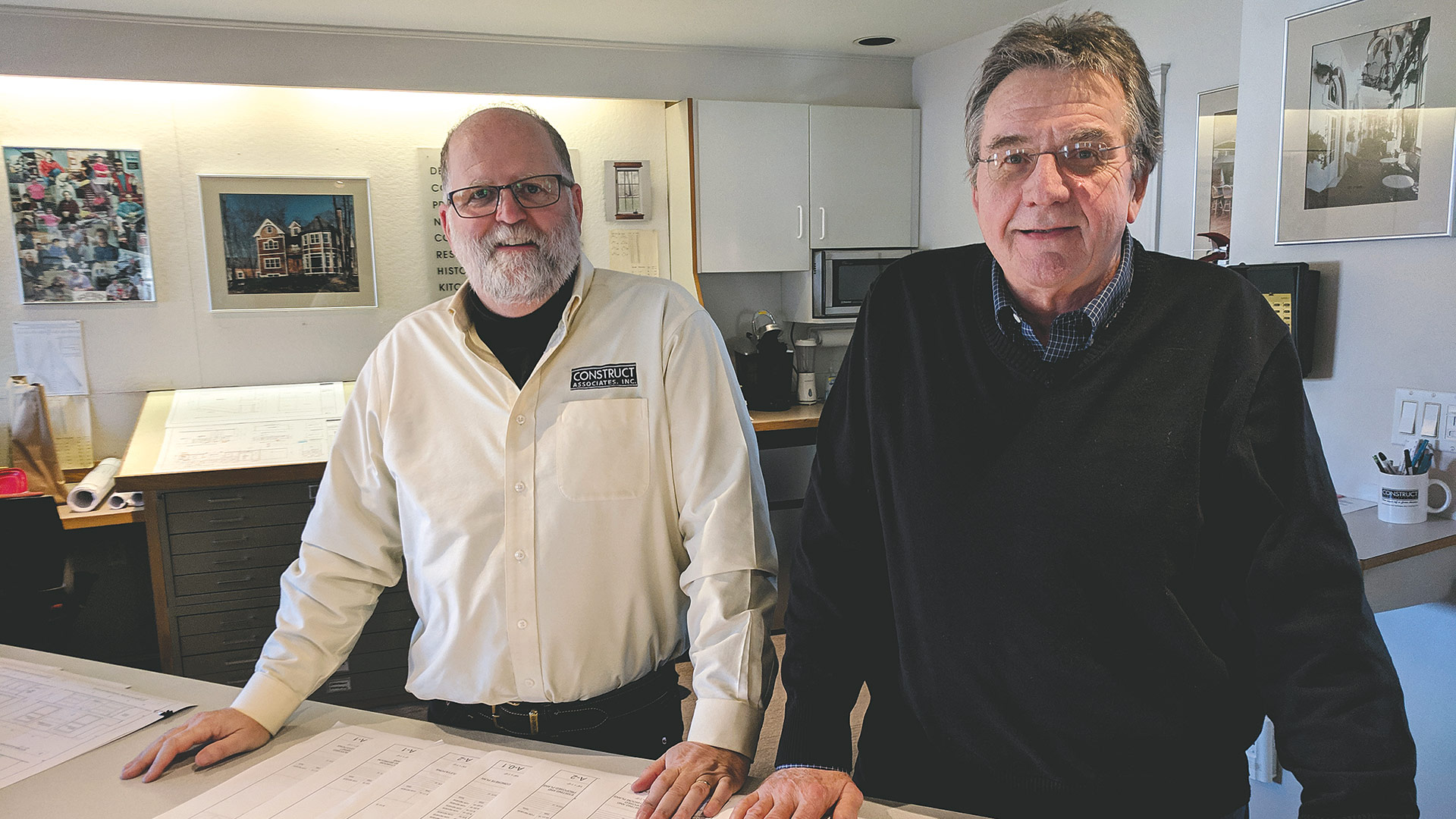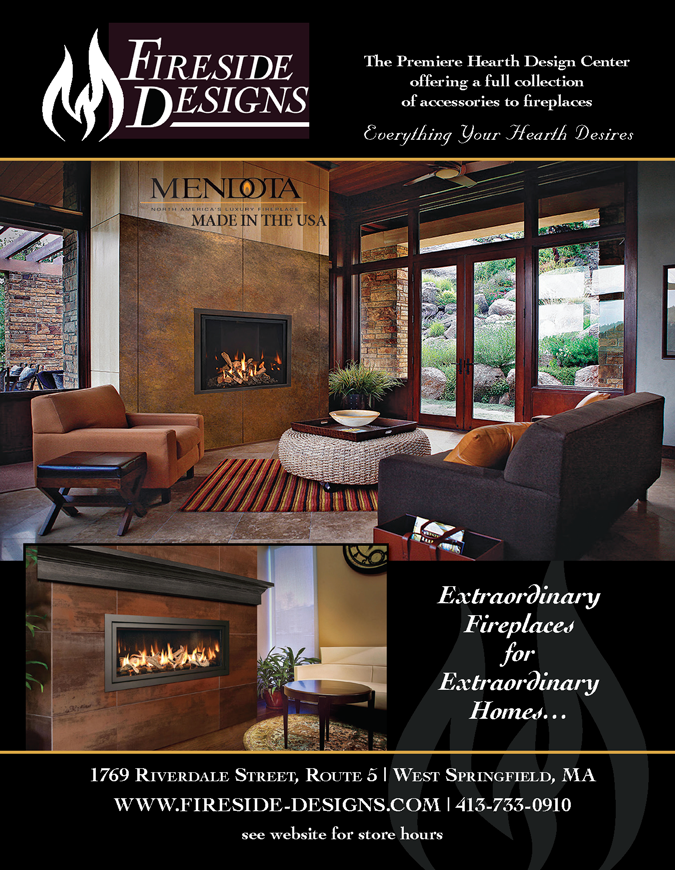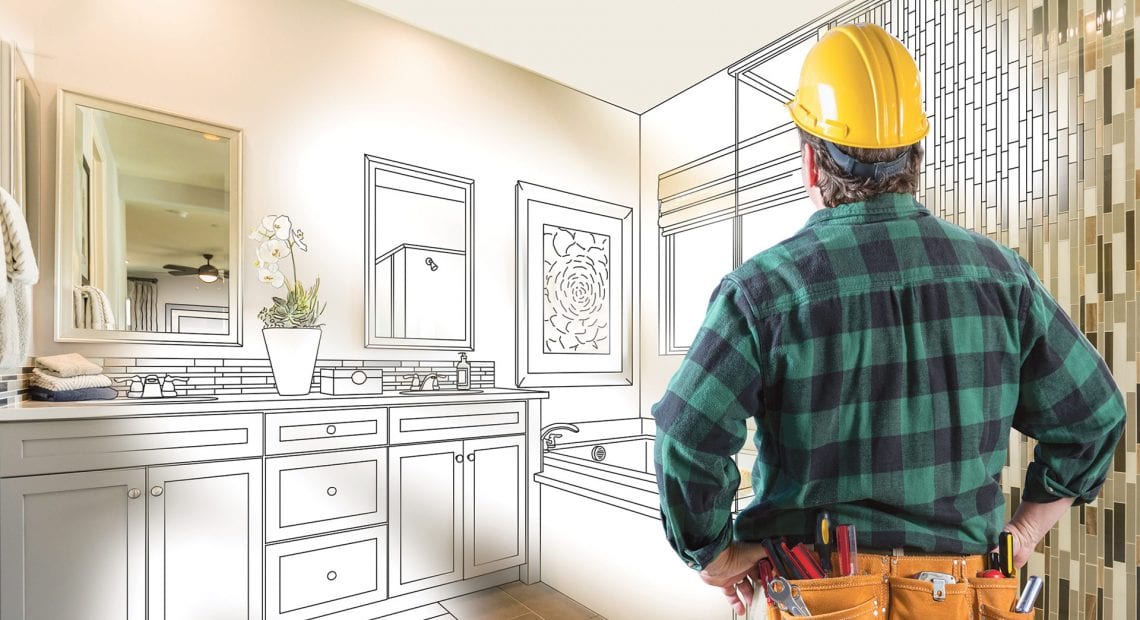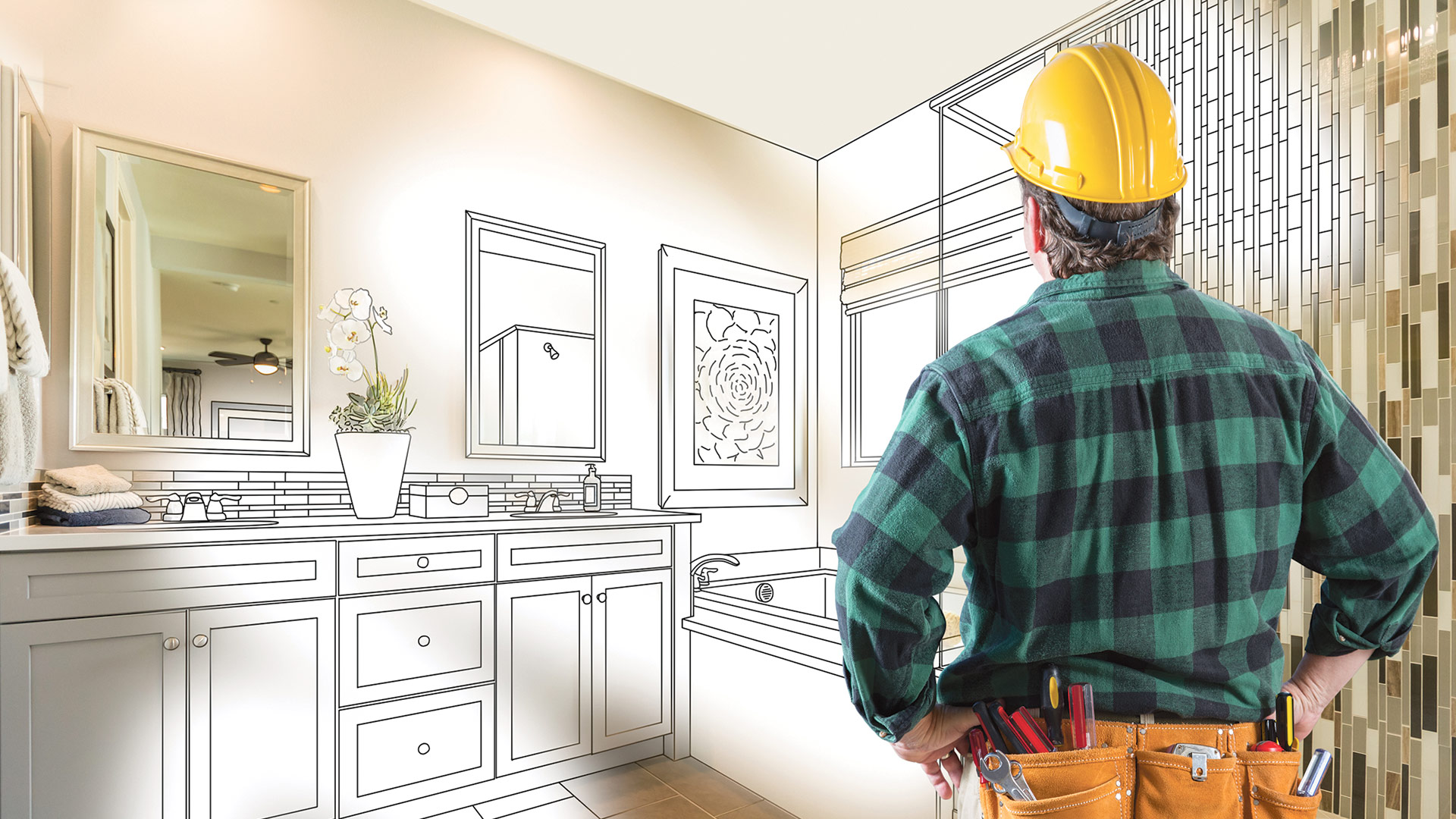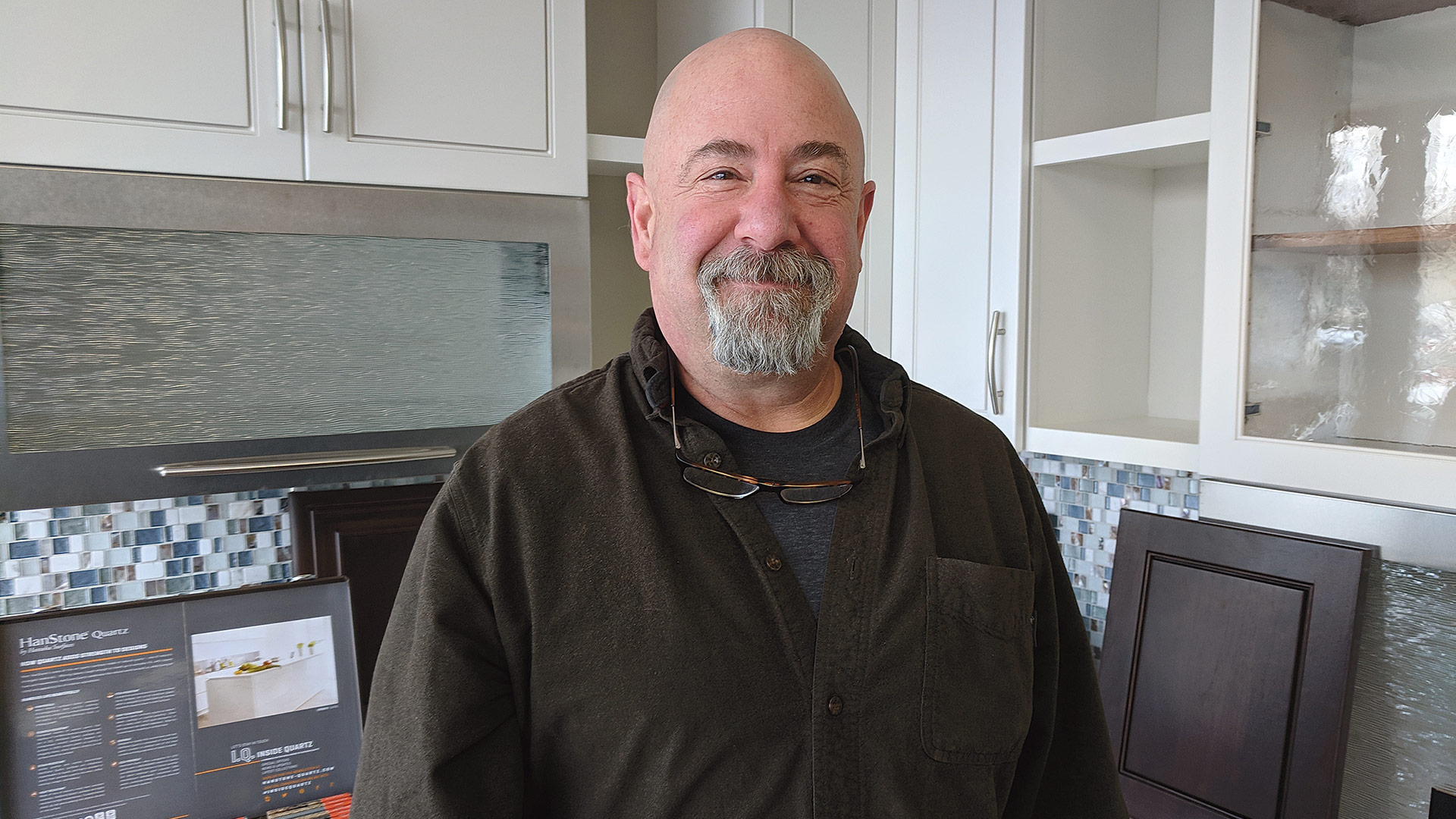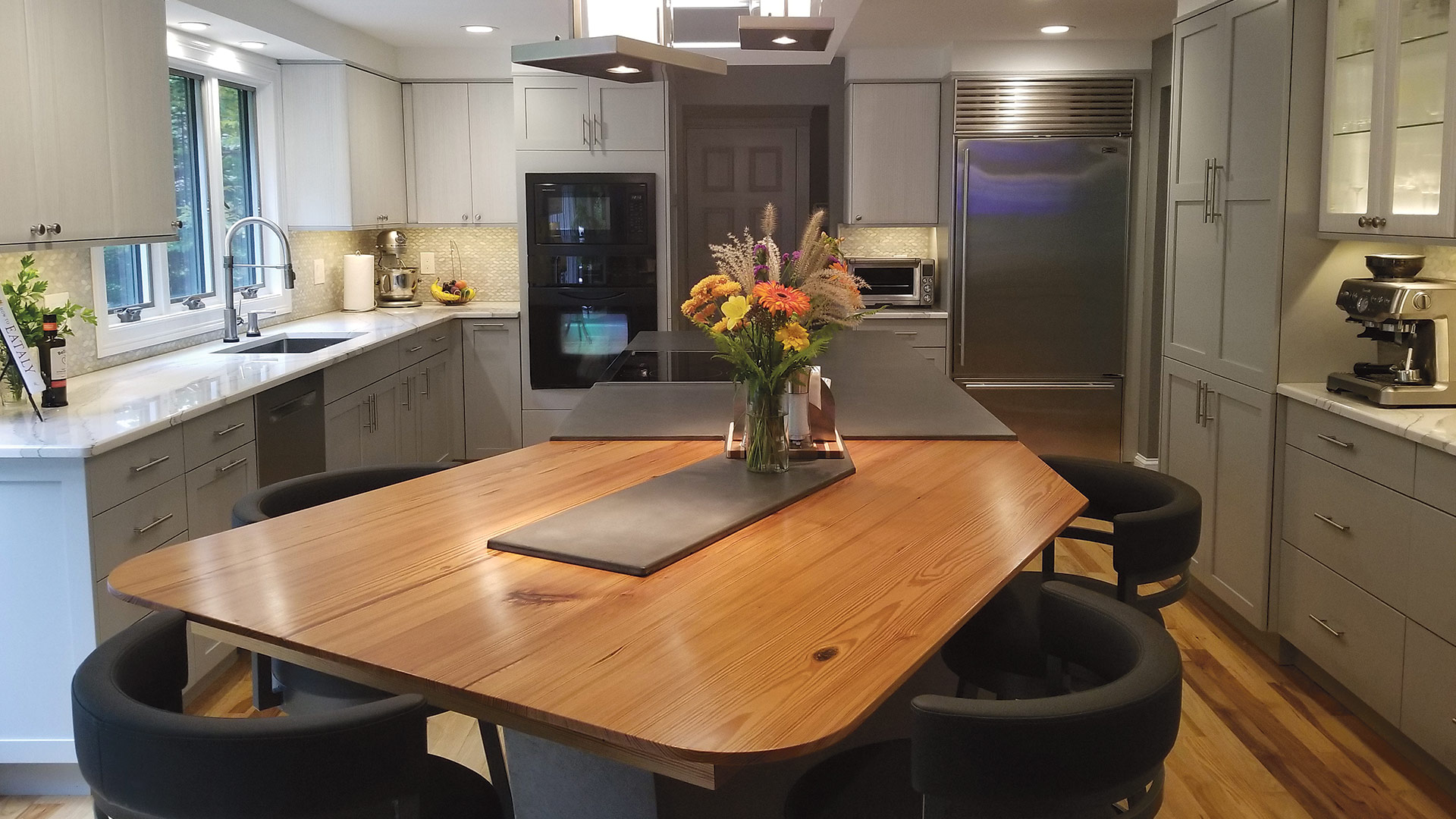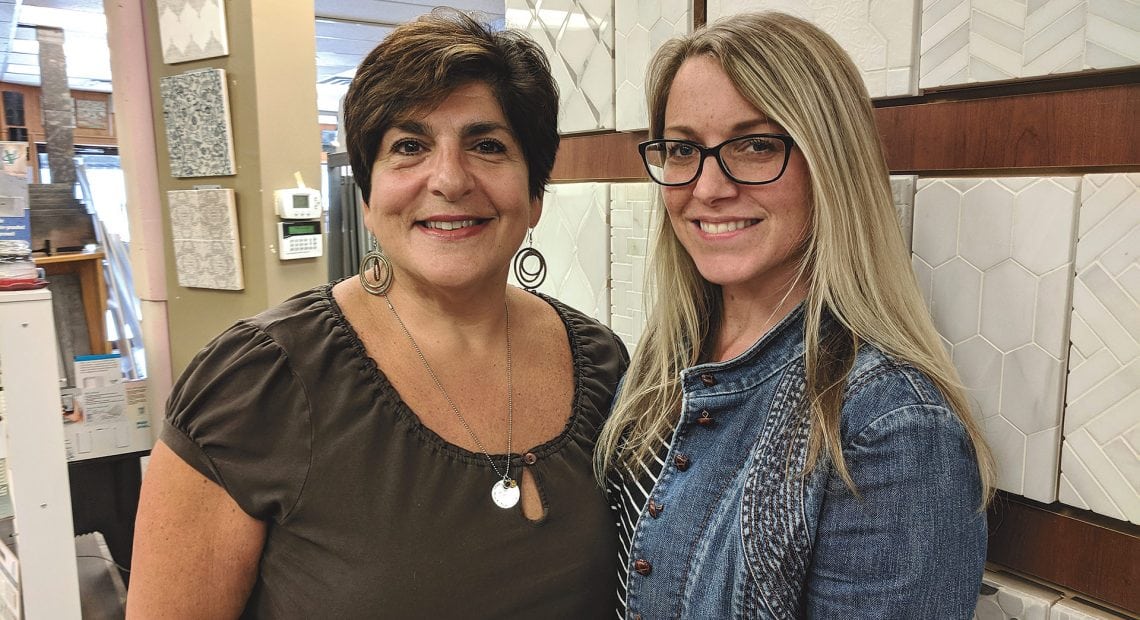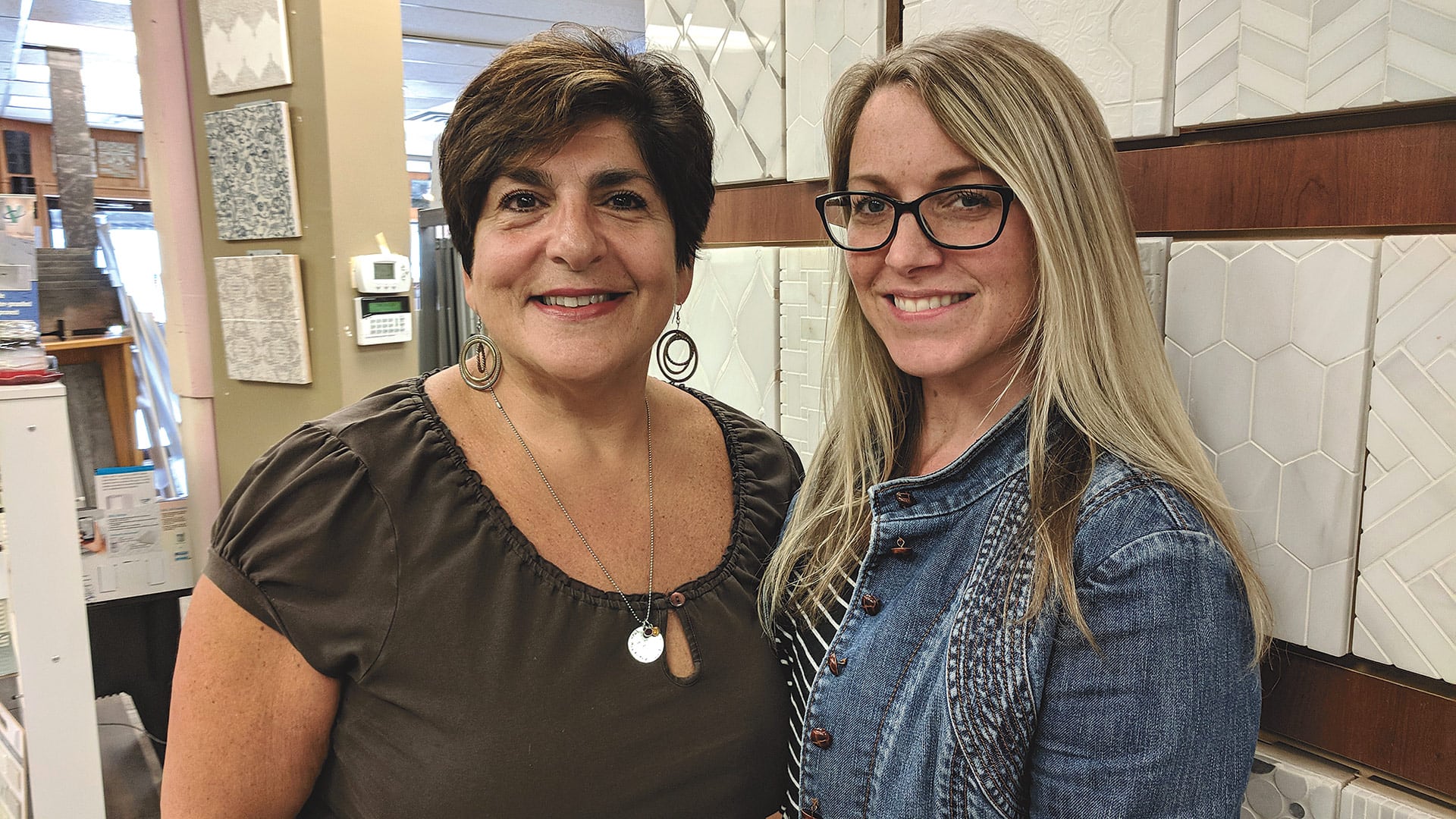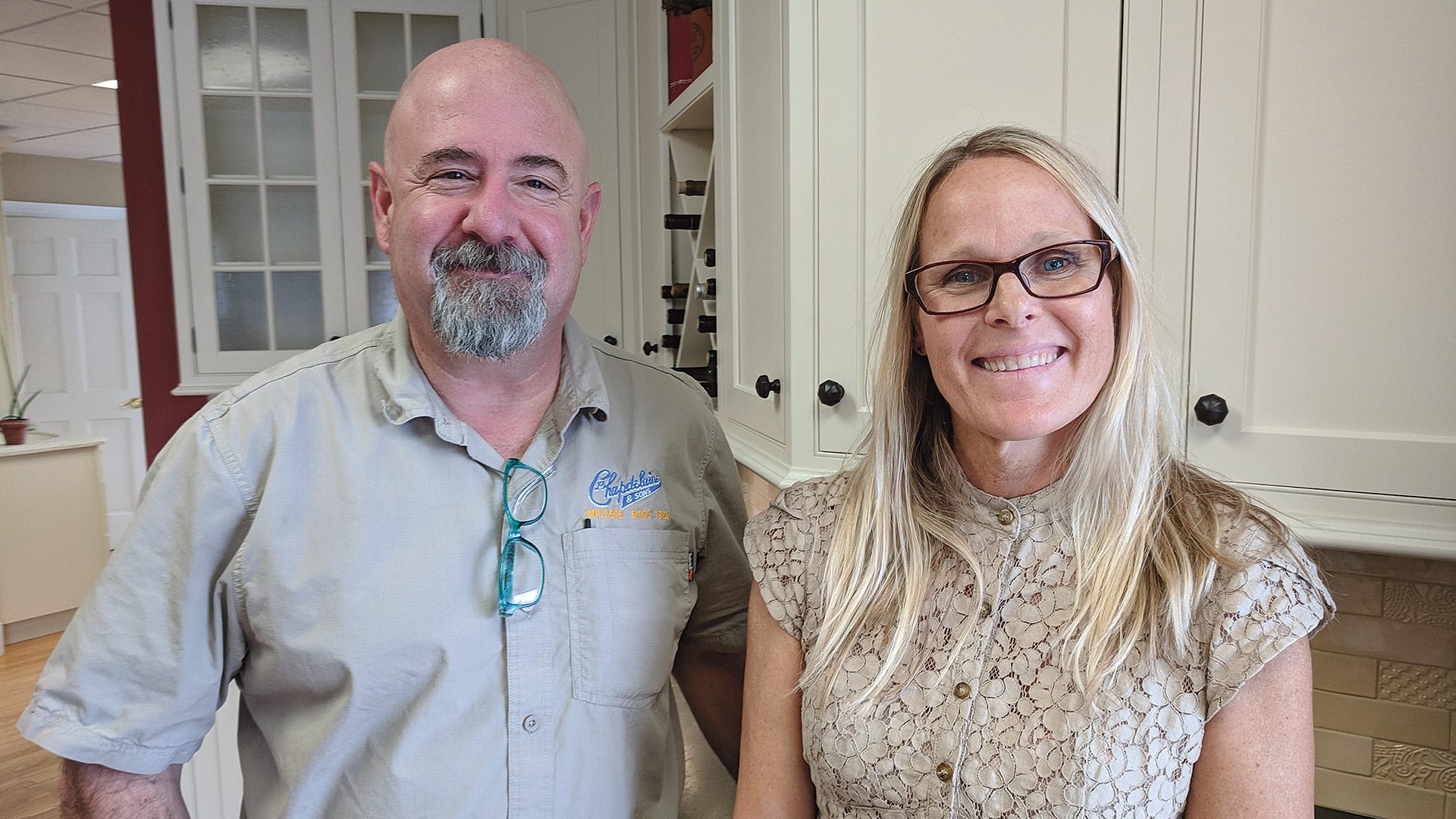Firm Foundation

Co-owners Robyn Provost and Bob Provost
Marking 75 years in business is a significant milestone for any company, and when Mowry & Schmidt Inc. hit that mark in 2022, it was extra gratifying, simply because of how it had survived the worst of the pandemic.
“We stayed working; we’re that essential workforce,” said Bob Provost, the third-generation co-owner of this family business with his sister, Robyn Provost. “People trusted us, we practiced the proper protocol, and we went in and out of people’s houses and people’s businesses. We never stopped. It was tough, what was going on, but at the same time, we were fortunate because we were able to work; our guys were able to work.”
Greenfield-based Mowry & Schmidt was also able to ride a wave of home improvement that arose when people began spending more time at home, as well as working from home, a trend that has solidified into something more or less permanent.
“You hate to shout out the positives from something that was so horrible, but we were able to stay in business through the worst of it, then things picked up dramatically,” Robyn said. “And that hasn’t changed. We’re still seeing a lot of work out there, and we actually have the ability to pick and choose a little bit more, to figure out what’s the right fit. There’s always a job that’s not the right fit, and you have to recognize that and be able to admit that. But it was an interesting phenomenon that happened, how construction exploded for a lot of people — if they could make it through that initial wave.”
“You hate to shout out the positives from something that was so horrible, but we were able to stay in business through the worst of it, then things picked up dramatically.”
The pandemic years were only the latest cycle in the long history of Mowry & Schmidt, which has been doing residential, commercial, and industrial work since its inception.
“It has kind of evolved over the years,” Bob said. “Years ago, a big part of it was industrial. But a lot of the paper mills and machine shops closed down, so it bounced more to residential and commercial. Even 20 years ago, we still had some pretty substantial industrial contracts. And now it’s maybe one or two, some smaller machine shops.
“So I’d say our work base now is commercial and residential, and that it kind of fluctuates depending on the market. We used to say we were 70% commercial and 30% residential. Now we might be 60-40, or maybe even 50-50 at times.”
The firm has tackled a wide range of jobs, from large construction jobs to smaller renovations and repairs, throughout its history, a diversity of expertise that has served as a buffer against shifting trends and economic tides.

The dining room inside the Farm Table in Bernardston, where Mowry & Schmidt performed significant work across the campus.
“We do new construction, renovations, additions, alterations,” Bob told BusinessWest. “We still do small projects, decks on homes, window replacements, door replacements, repairs. And then we do larger projects, whether it’s building a new bank, building a new restaurant, new home construction, large additions, prefabricated metal buildings as well.”
For this issue’s focus on construction, we talked at length with the Provost siblings about how their business has stayed remarkably stable over the years, and how they’re tackling today’s challenges — from higher costs to fierce competition to workforce issues — with an eye toward growing the firm further as it approaches the century mark in the decades ahead.
History in the Making
Mowry & Schmidt was founded by David Mowry and Albert Schmidt in Greenfield in 1947, quickly gaining loyal customers and the reputation for diverse expertise it touts today. In 1977, when the founders retired, Robert Provost (David’s son-in-law) and Georges Wetterwald purchased the company and continued to grow it. In 1990, Wetterwald retired, and Robert became the sole owner.
During the 1990s, Bob and Robyn Provost, the current owners, started working in the office — Robyn from outside the company and Bob from its job sites, where he had labored since the 1980s — to work with their father on estimating, project management, and other roles. When the elder Provost died in 2007, ownership was transferred to his wife, Marcia Mowry Provost, and today, the third generation of Bob and Robyn manage all the day-to-day operations, with the help of Bob’s wife, Jessica Provost.
“If they had their kitchen renovated, but then, 20 years later, they come back and ask you to do their deck and porch or their bathroom, I think that’s a big deal.”
“A big part of our success is repeat business, whether it’s residential, commercial, or a commercial project leading to residential work,” Bob said, noting that longtime customers run the gamut from Greenfield Savings Bank — one recent project is the restoration of Greenfield’s former library, the Leavitt-Hovey House, into a new facility for the bank — to educational facilities like Northfield Mount Hermon, Stoneleigh Burnham, and Deerfield Academy.
“One of our last large jobs was the VESH veterinary clinic in West Springfield,” Robyn added. “That was a good-sized project, and we hope to become a repeat customer and able to do more work for them.”
That job is one example of how Mowry & Schmidt continues to expand its footprint outside of Franklin County.

Mowry & Schmidt’s work for VESH in West Springfield is an example of seeking jobs outside its traditional Franklin County footprint.
“We’re not afraid of travel. We’ll go where the customer base is, and if it’s a repeat customer, I’ll go anywhere for them,” Bob said, adding quickly that other firms are doing the same these days.
“We’re competing against contractors up here that we haven’t had to in the past,” Robyn agreed. “And then, vice versa, we’re walking into places that we haven’t been all the time. It’s happening everywhere.”
And it’s happening at a time of flux and challenge in other ways in the construction world, one example being the impact of high prices, she added.
“Our costs are high, and we have to pass that on to the consumer, so consumers are facing construction costs that are substantially higher than what they maybe think they should be. So we need to explain that and get people to understand that this is the time we live in; these are the costs.”
The other major issue across the construction spectrum these days is workforce — specifically, finding enough people to do the available work, a situation that has caused many firms to turn down work they might otherwise procure.
“There’s a lot of work out there still in construction; even though the prices are high, people are paying it. There’s a demand, and that creates a demand on the workforce,” Robyn noted. “People are needed to work in all of the industries, whether they’re making the material, trucking the material, or actually installing it.”
Fortunately, Bob added, Mowry & Schmidt hasn’t seen significant employee turnover, with team members who have been on board for anywhere from five to more than 20 years.
“If they had their kitchen renovated, but then, 20 years later, they come back and ask you to do their deck and porch or their bathroom, I think that’s a big deal.”
“As for the new guys, it’s hard to find younger folks, but some of our newer folks come from other companies closing up, or a lone sole proprietor who has come to a point in their life where they don’t want to deal with the bills, the headaches, all the office crap; they just want to come in and work. That’s been a good avenue for us to find people to come in and work for us. We also have people who’ve retired from other industries, other types of work; they’ve put their 20-plus years in, and they’ve still got a lot to offer.”
Often, they’re offering those services to clients that have been loyal to Mowry & Schmidt for generations, Bob said. “We keep them because they know they can trust us, and we go in there and do their work, and we’re fair.”
More challenging, he added, is developing trust with new clients, but the firm can lean on its reputation over 77 years in business, as well as its recent performance.
“When the same individuals come back time after time to do projects in their house, I think that speaks volumes,” Robyn said. “If they had their kitchen renovated, but then, 20 years later, they come back and ask you to do their deck and porch or their bathroom, I think that’s a big deal.”
The key is honesty and open communication, Bob added. “Don’t get me wrong; in 77 years, we’ve made mistakes. It’s how you finish it out and correct those mistakes … it’s how you take care of them and make sure everything’s squared away at the end.”

The company was founded in Greenfield in 1947 and is still headquartered in the city today.
Valuing transparency extends to the firm’s expectations for its subcontractors, Robyn said.
“Our crew doesn’t do everything on a project. We do X amount of the work, but we have to rely on subcontractors, or we would not exist. And being able to find trustworthy, transparent subcontractors is something we’ve worked really hard at achieving. And we maintain those relationships as long as we possibly can. We know that’s an important part of being a general contractor because you have to rely on these people.”
Looking to the Future
Bob told BusinessWest he has twins — a son and daughter — who both work at the firm, but he doesn’t know whether they’ll eventually want to become part of a fourth generation of family ownership — and, besides, he and Robyn have a long way to go in that role.
“I’m still pretty young, and I can’t imagine doing anything else. So we’ll be doing it for a while,” he said. “Hopefully another generation comes along, which wouldn’t break my heart if it did. I’m a firm believer that this is a good place, and there’s always going to be a need for general contracting and construction. You just have to run it the right way and keep moving forward; that’s the key.”
Whether it’s construction and renovation, design-build projects, construction management, or even small repairs, there’s still plenty of work in Franklin County and beyond, he added.
“It feels great when you finish a veterinary clinic, but you also feel great when you know that you’ve helped somebody stay in their home by renovating their bathroom or putting up a ramp.”
“Those are good customers. Your local banks, your YMCAs — they’re strong, they’re local, and they’re good repeat business. You could have some people on the board at the YMCA, where you’re working, and next thing you know, you’re working at their house. Getting an opportunity to work for all these people and customers, it’s very rewarding.”
Robyn noted that the city of Greenfield will often call Mowry & Schmidt to tackle an urgent job for the Fire Department or Board of Health. “Unfortunately, things happen, and they need somebody local they can call at a moment’s notice, that can put together a crew and send them out.”
It’s a nimble trait, and an earned one, Bob said.
“That’s having a quality crew. You’ve got to have guys that aren’t looking at you cross-eyed when you take them out of finishing somebody’s beautiful kitchen and say, ‘come with me; we have to go board up a house.’”
Another niche has been helping elders in their homes, figuring out ways to keep them aging in place, Robyn added.
“The other thing is just being there when someone who we’ve worked for for 30 years needs a cabinet door adjusted, and they call, and we do it,” she added. “We’ll send somebody over there as soon as we can to get it done.
“I think if we weren’t able to adjust so quickly and do those small things, that would be tough for us because it makes you feel good about what you do. It feels great when you finish a veterinary clinic, but you also feel great when you know that you’ve helped somebody stay in their home by renovating their bathroom or putting up a ramp.”
It’s just one more way Mowry & Schmidt isn’t just staying busy — it’s making an impact, one customer at a time.







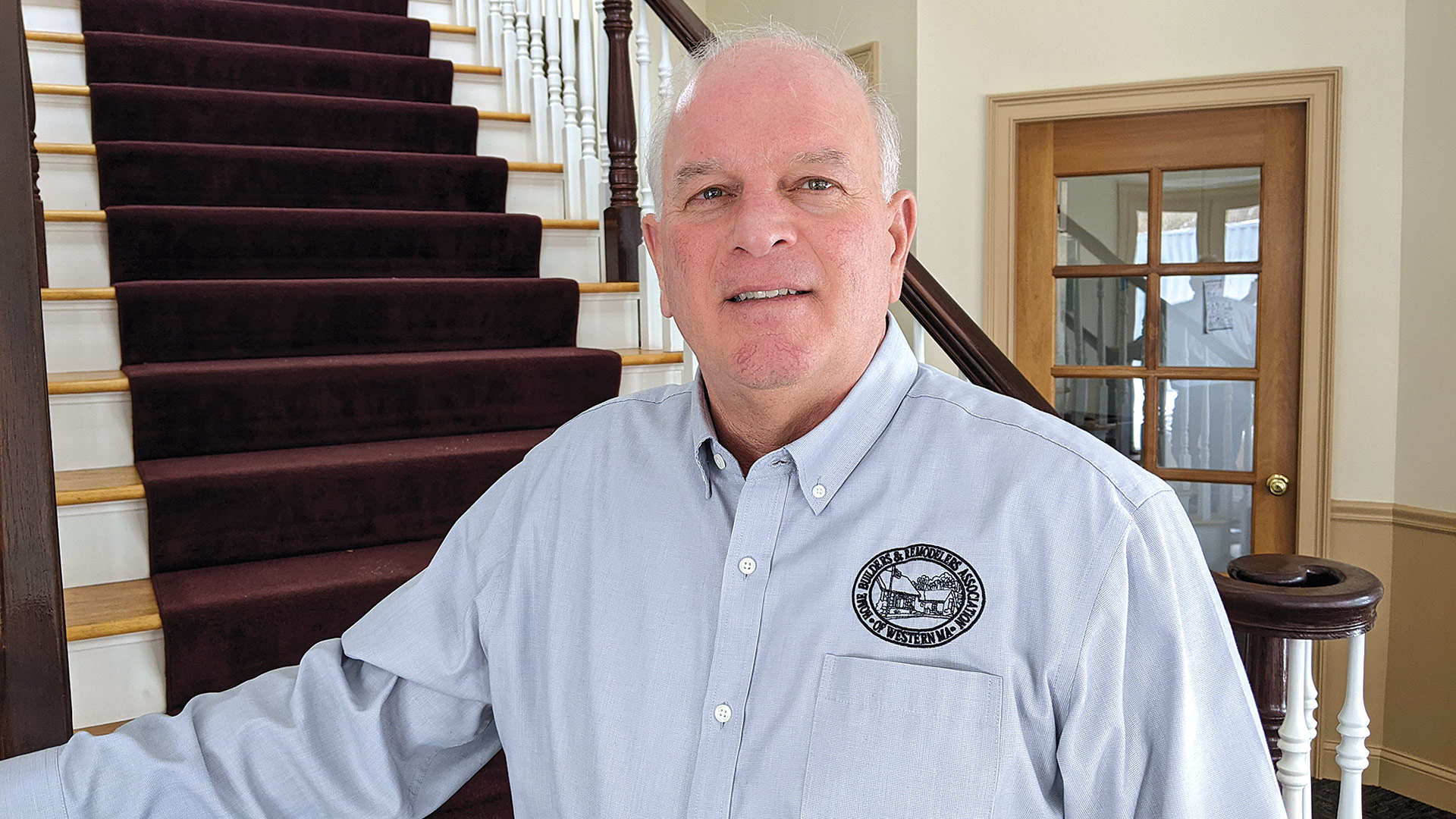
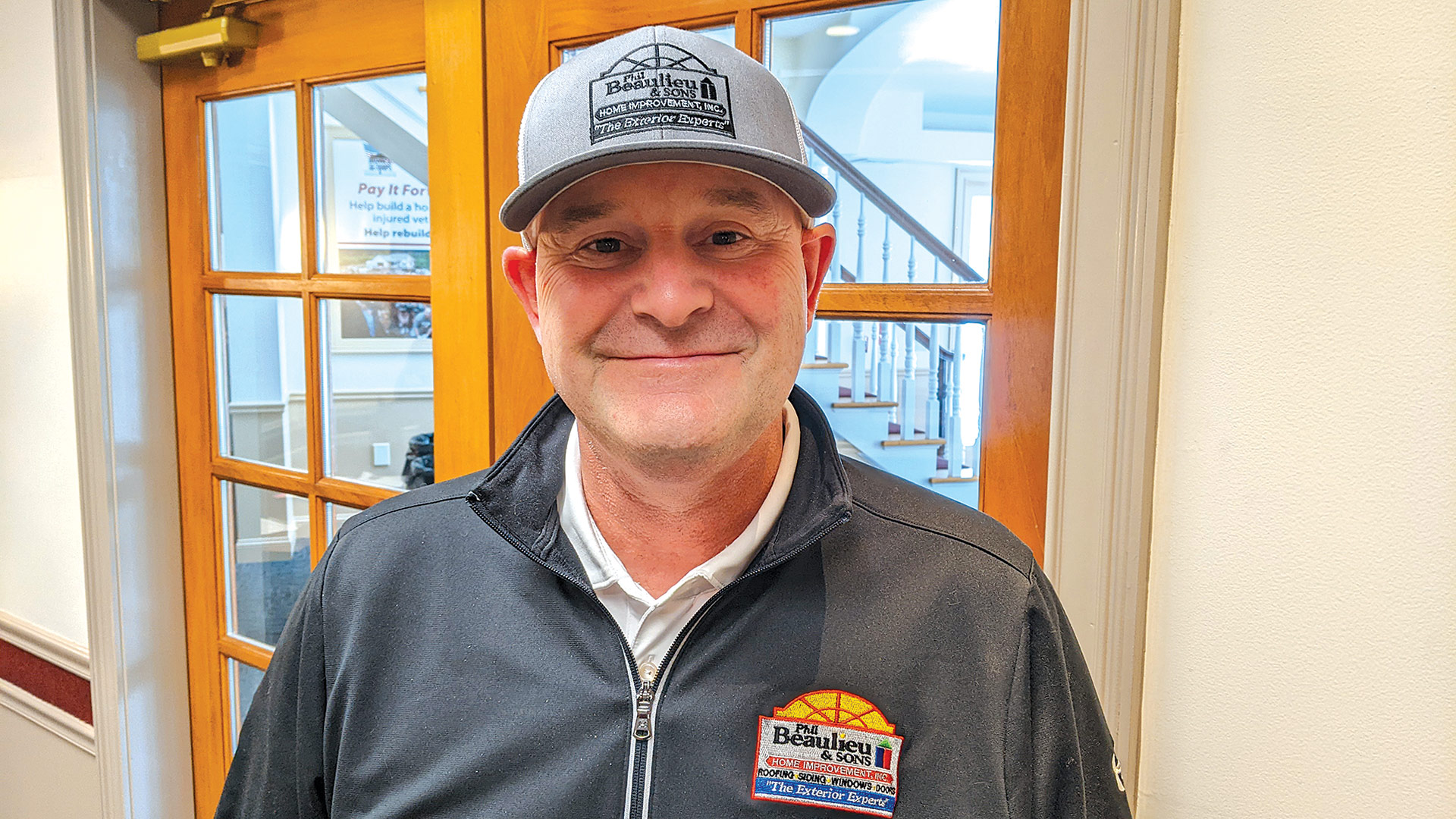








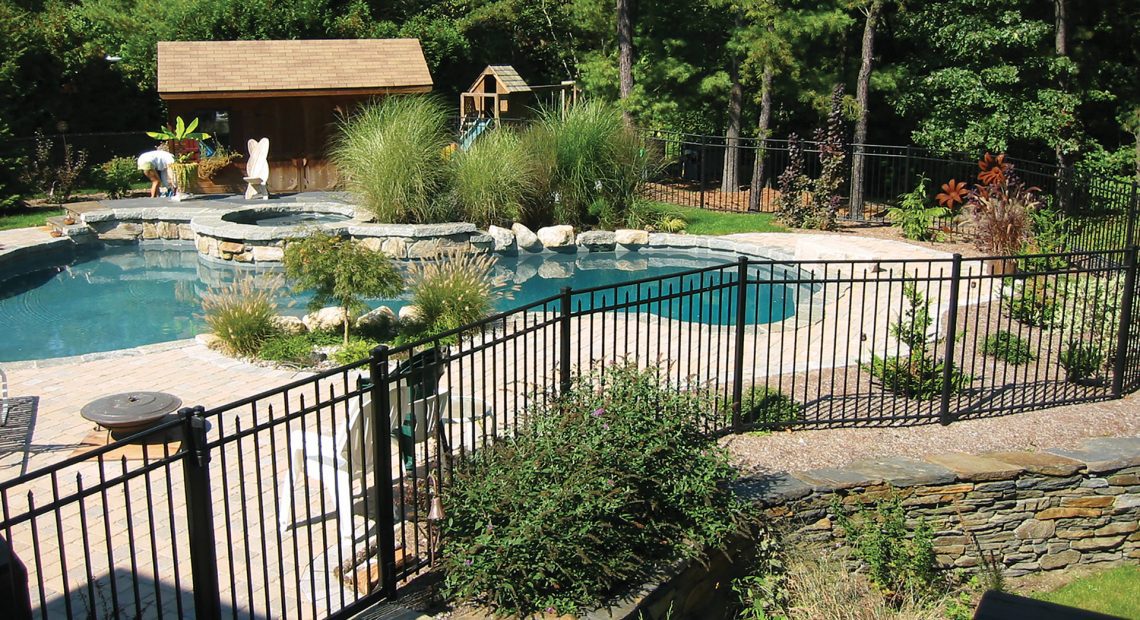
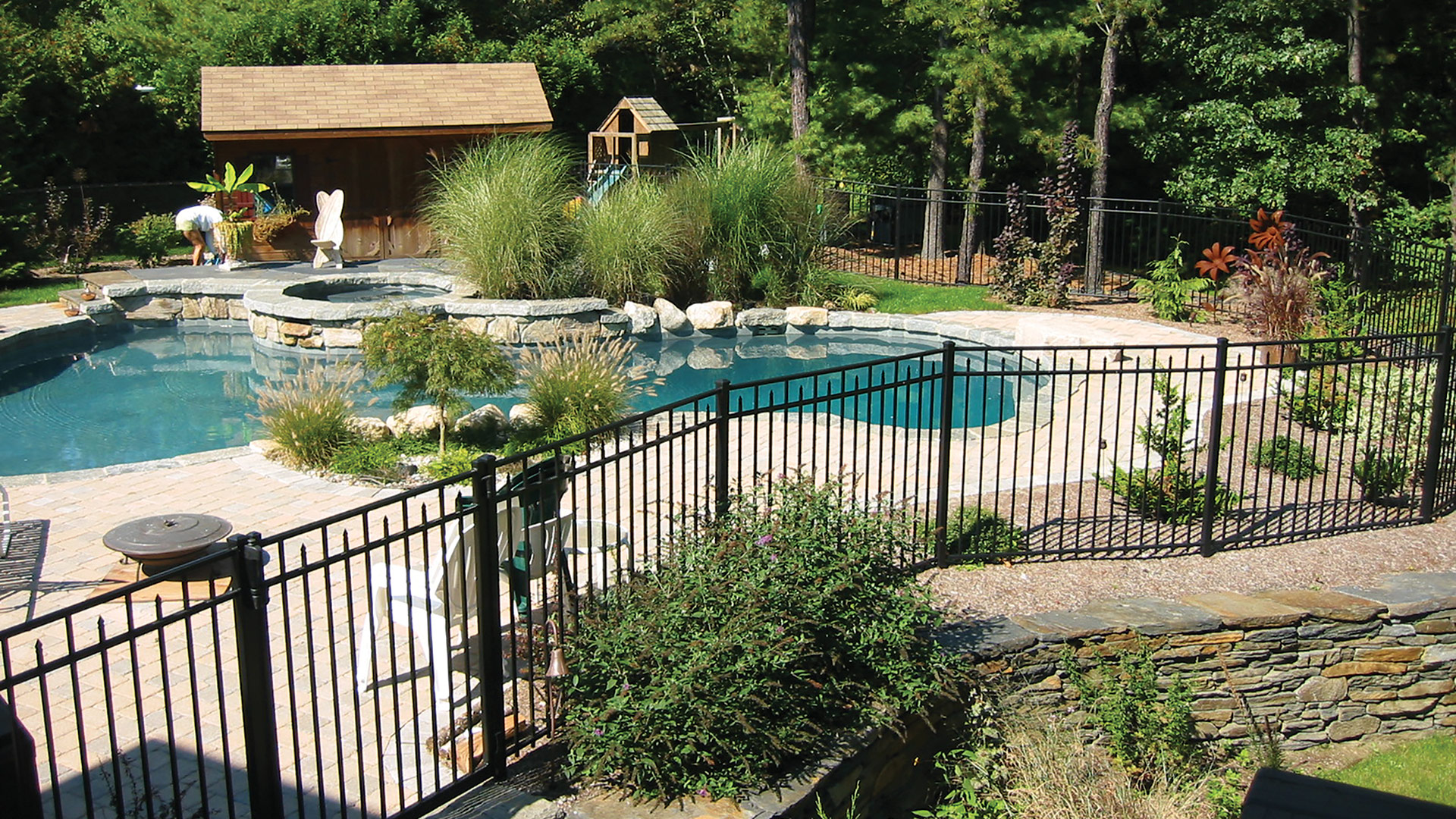
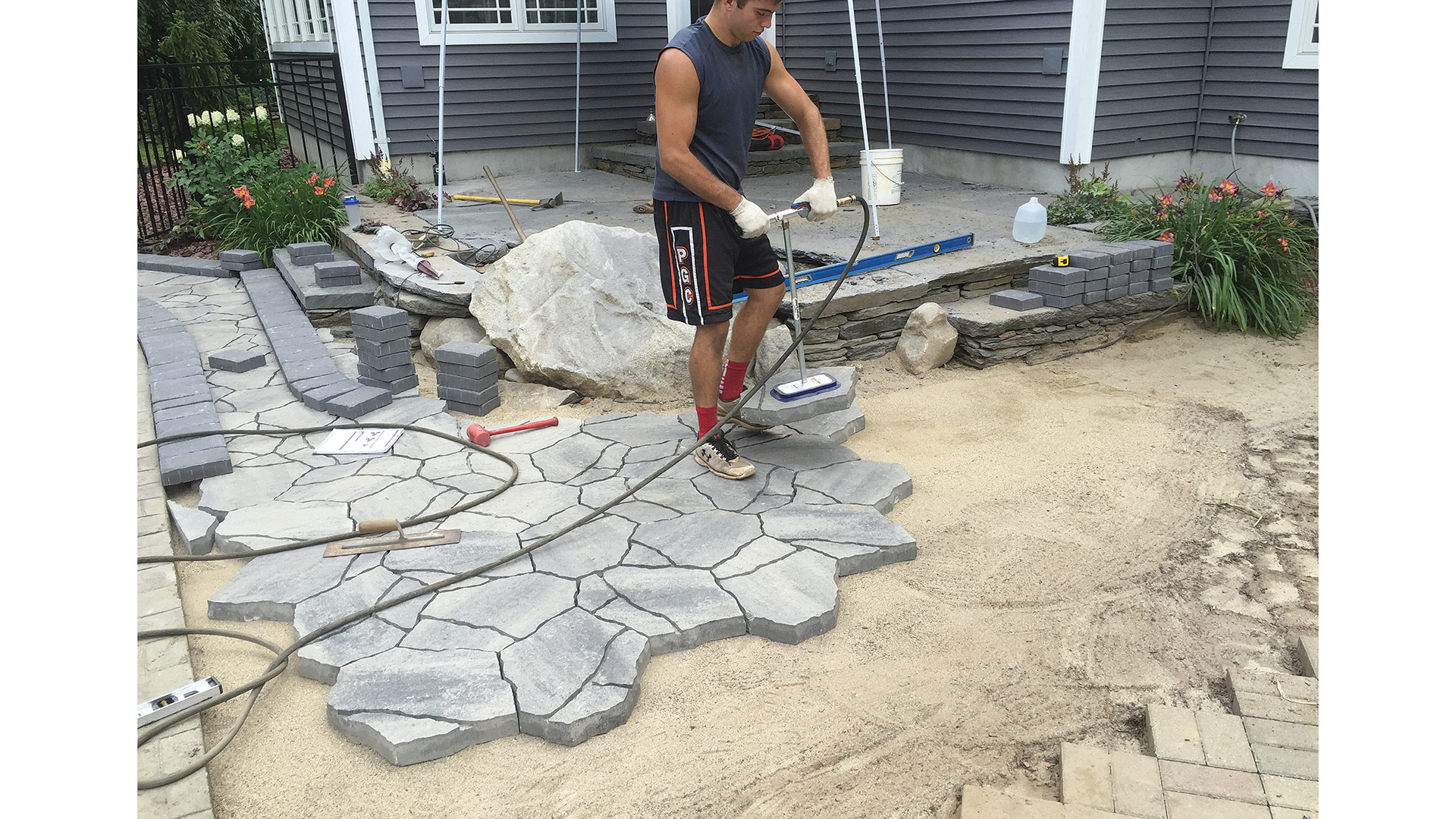






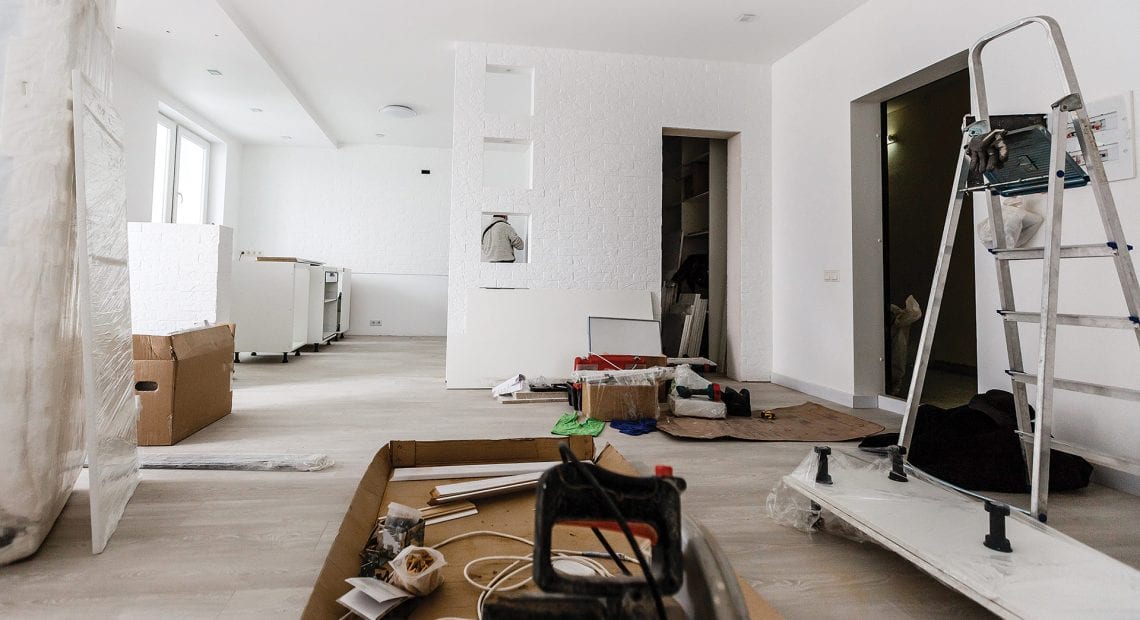
 With home-improvement demand surging in 2019, contractors say they can pick and choose from available jobs, which isn’t always ideal for consumers, who often have trouble finding a professional who can fit them in. In realty, most contractors would love to take on more jobs — but can’t because it’s not easy to find talent, especially young talent with the potential to grow with a company over the long term.
With home-improvement demand surging in 2019, contractors say they can pick and choose from available jobs, which isn’t always ideal for consumers, who often have trouble finding a professional who can fit them in. In realty, most contractors would love to take on more jobs — but can’t because it’s not easy to find talent, especially young talent with the potential to grow with a company over the long term.
